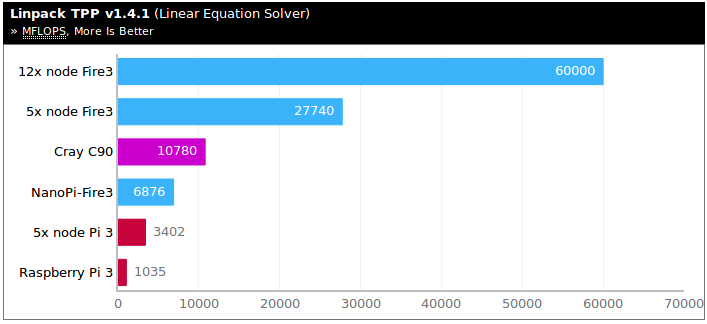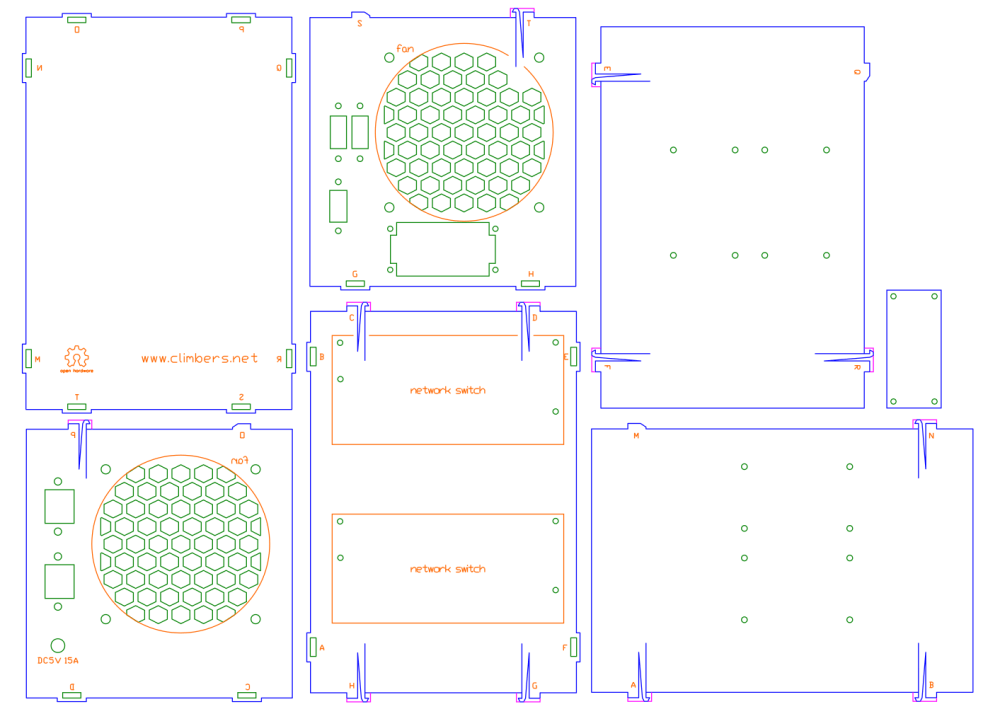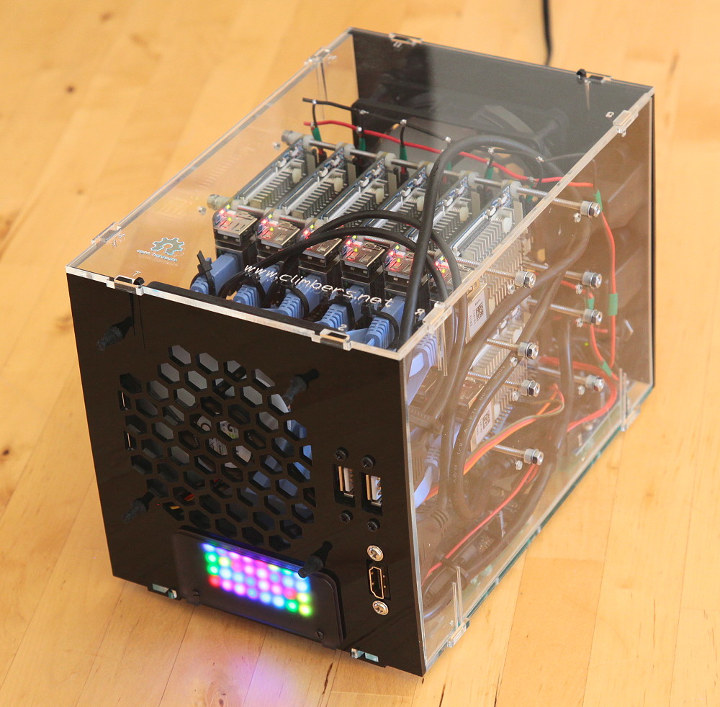Nick Smith has been messing around with clusters made of Arm boards for several years starting with Raspberry Pi boards, including a 5-node RPI 3 cluster, before moving to other boards like Orange Pi 2E, Pine A64+, or NanoPC-T3.
His latest design is based on twelve NanoPi Fire3 boards with 8 cores each, bringing the total number of cores to 96. The platform may not be really useful for actual HPC applications due to limited power and memory, but can still be relied upon for education and development, especially it’s easily portable. Nick also made some interesting points and discoveries.
It’s pretty with shiny blinking LEDs, and what looks like proper cooling, and the cluster can deliver 60,000 MFLOPS with Linpack which places it in the top 250 faster computers in the world! That’s provided we travel back in time to year 2000 through 🙂 By today’s standard, it would be rather slow, but that’s an interesting historical fact.
Nick also compared the price of NanoPi Fire3 and Raspberry Pi 3 in the UK, and with shipping, VAT, and duties (actual none needed) both boards are about the same price (£34.30 vs £33.59), but based on his benchmark, NanoPi Fire 3 is over 6 times faster.
 Something is not quite normal here. Both boards come with Cortex A53 cores with RPI 3 equipped with the Broadcom BCM2737 quad core processor @ 1.2 GHz, and NanoPi Fire3 with a Samsung S5P6818 octa core processor @ 1.4 GHz. The difference in hardware means we should expect 2 x (1.4/1.2) = 2.3 times better performance from Linpack for a single board. He’s probably using Raspbian (32-bit) on RPi 3, and possibly a 64-bit OS on Fire3, so that would add another ~30% extra performance to the total, or around 3 times faster. So there must be some other explanations like cache size, different compiler flags, or so on.
Something is not quite normal here. Both boards come with Cortex A53 cores with RPI 3 equipped with the Broadcom BCM2737 quad core processor @ 1.2 GHz, and NanoPi Fire3 with a Samsung S5P6818 octa core processor @ 1.4 GHz. The difference in hardware means we should expect 2 x (1.4/1.2) = 2.3 times better performance from Linpack for a single board. He’s probably using Raspbian (32-bit) on RPi 3, and possibly a 64-bit OS on Fire3, so that would add another ~30% extra performance to the total, or around 3 times faster. So there must be some other explanations like cache size, different compiler flags, or so on.
When it comes to multi-board performance, one should however expect scaling for the Raspberry Pi with its Fast Ethernet connection not to perform as well as on GbE ports equipped NanoPi Fire3 cluster, and that’s exactly the case here:
- 5x node Pi 3 vs single Raspberry Pi 3: 3.28x better performance
- 5x node Fire 3 vs single NanoPi Fire3: 4.06x better performance
It’s also worth noting in that particular benchmark, a single NanoPi FIre3 is twice as fast as 5 Pi 3 boards.
Both boards consume about the same amount of power, although NanoPi Fire3 a bit more, which results in Fire3 being 5.8x more power efficient than RPi3 in Linpack benchmark.

The whole setup is open and you can download DXF / SVG files for the laser but case, as well as get the list of parts in the aforelinked blog post. A selection of fans is also provided with different RPM and sizes, and performance test results (CPU throttling or not). The total cost for the setup with all 12 NanoPi board and shipping is £543.27 ($720 US).
If you’re interested in tutorials about running distributed software on NanoPi Fire3 cluster, you may want to check out to Nick’s website from time to time, as he plans to write two such tutorials namely “Cryptocurrency mining on an Arm supercomputer” in Q3 2018, and “Deep Learning AI on an Arm supercomputer” in Q4 2018.
Via Worksonarm

Jean-Luc started CNX Software in 2010 as a part-time endeavor, before quitting his job as a software engineering manager, and starting to write daily news, and reviews full time later in 2011.
Support CNX Software! Donate via cryptocurrencies, become a Patron on Patreon, or purchase goods on Amazon or Aliexpress





